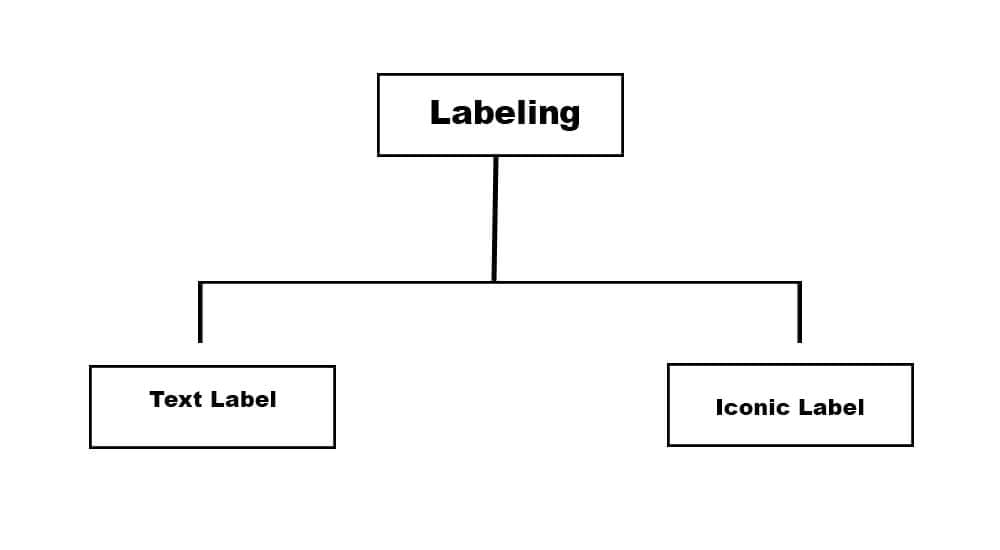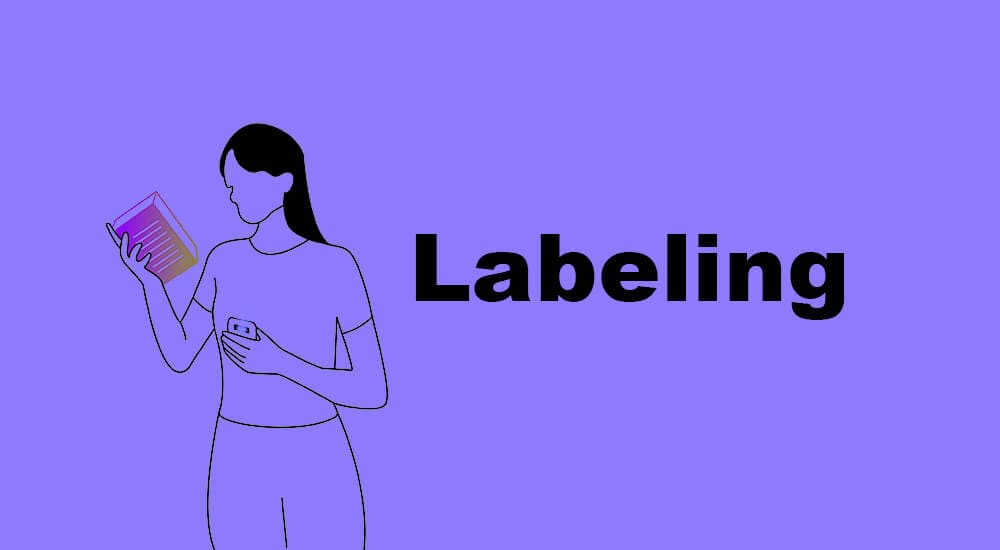Labeling is printed information on a product that is used for its identification. It is bonded to the product or encoded so the consumer can know the product. Labeling is a legal requirement to sell products.
The label provides information about the product and the brand. It provides product usage, quantity, expiry, etc. It can be removable or non-removable.
Labeling aims to communicate product information efficiently using minimal space. The label should use plain language with fewer words to convey the message.
Types of Labeling

A product label can be of two types:
1. Text Labels
These labels only contain text; businesses use headings, subheadings, and text to provide product information and features.
These labels are used when the product size is smaller and using images or icons is impossible.
2. Iconic Labels
These labels have text and icons. Here, along with text descriptions, icons are also used. This is the most common type of labeling used by businesses.
This labeling is used when the product size allows extra space for images.
Labeling Functions
Below are the functions of labeling.
- Provides Product Information: A label provides complete product information. You will know the product’s features and ingredients.
- Provides Pricing: It provides the maximum retail price of the product. A seller cannot sell the product for more than the price mentioned on the product label.
- Provide Product Expiry Date: Consumers can see the product expiry date on the label, which helps them avoid using expired products.
- Product Promotion: Sellers can add discount information on labels to increase sales. Promotion on product labels helps increase sales.
- Fulfill Legal Requirements: It is a legal requirement to put labels on products in all countries and provide the minimum required information.
- Provide Warning: A label provides a warning for some products that are harmful to health, such as tobacco, cigarettes, etc.
Summary
A label is a product identifier. This helps consumers recognize products because of their logo, design, and brand. The label has product information, features, usage, warnings, pricing, and expiry details. It can be a great promotional tool and brand recognition if used correctly.
